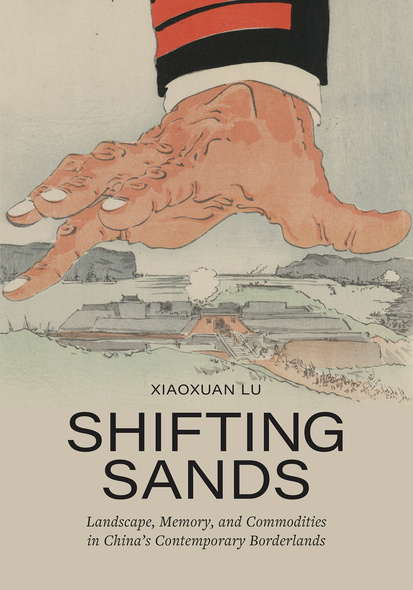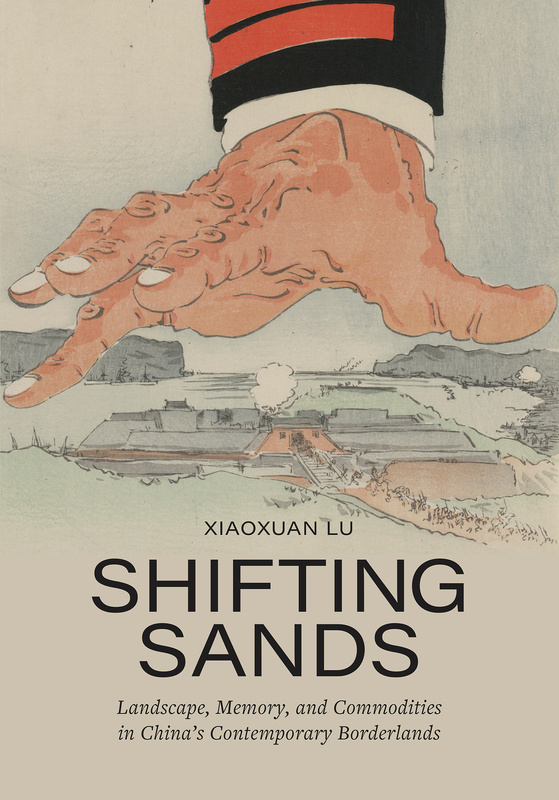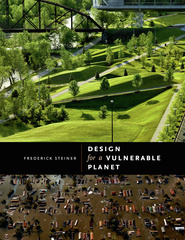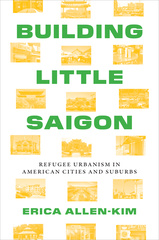Shifting Sands
Landscape, Memory, and Commodities in China's Contemporary Borderlands
How China’s borderlands transformed politically and culturally throughout the twentieth and twenty-first centuries.
China’s land borders, shared with fourteen other nations, are the world’s longest. Like all borders, they are not just lines on a map but also spaces whose histories and futures are defined by their frontier status. An ambitious appraisal of China’s borderlands, Shifting Sands addresses the full scope and importance of these regions, illustrating their transformation from imperial backwaters to hotbeds of resource exploitation and human development in the age of neoliberal globalization.
Xiaoxuan Lu brings to bear an original combination of archival research, fieldwork, cartography, and landscape analysis, broadening our understanding of the political economy and cultural changes in China’s borderlands in the twentieth and twenty-first centuries. While conventional wisdom looks to the era of Deng Xiaoping for China’s “opening,” Lu shows the integration of China’s borderlands into national and international networks from Sun Yat-sen onward. Yet, while the state has left a firm imprint on the borderlands, they were hardly created by China alone. As the Chinese case demonstrates, all borderlands are transnational, their physical and socioeconomic landscapes shaped by multidirectional flows of materials, ideas, and people.
The book offers an enduring model for architectural and planning historians interested and invested in global comparisons...[and] reflects a keen response to statebuilding and internationalization within the ever-changing national and international contexts.
[This book is] a truly beautiful object...While it is true that any book attempting a study of all of China’s borders will necessarily only offer a partial view, Shifting Sands does a truly impressive job...[and] describes a complex, emerging and truly transformative geography.
The insightful case-based texts and collection of materials–from archives to fieldwork on through carefully constructed cartographies–offer a novel perspective to understanding the coupling of new modes of statecraft and resource extraction. Lu’s writing is sharp and well-referenced, and it thoughtfully probes past and present policies on Chinese borderlands.
Extraordinary in scope, Shifting Sands presents a contemporary and historical palimpsest that introduces readers to the complexity of social and environmental transformations in the border regions of China and its neighboring countries today. By uncovering the layers of change and contestations at multiple temporal and spatial scales, the book also pushes the boundaries of landscape studies in the most productive and exciting ways.
Landscape, memory, and commodities are arguably the driving forces behind China’s economic and political policies today. They are behind the Belt and Road Initiative. Joining detailed research with site work, Xiaoxuan Lu provides eighteenth- to twentieth-century context and then examines the most important regions for shaping China’s border policy today: Laos, Krygyzstan, and Korea. This heavily illustrated book, with outstanding maps, is both provocative and prescient.
Xiaoxuan Lu’s scholarship stands apart from the wave of work around China’s expansive Belt and Road Initiative in the way it conceptually frames the plethora of projects, plans, and policies within broader landscape concepts, history, and continuous nation-building. Shifting Sands underscores the deliberate and unintended consequences of territorial transformation of China’s Inner Asian borders, replete with layered histories and embodying numerous cultures. The critically insightful case-based texts and collection of materials—from archival to fieldwork to constructed cartographies and timelines—offer a rich perspective on the coupling of new modes of statecraft and resource extraction.
Xiaoxuan Lu is an assistant professor in the Division of Landscape Architecture at the University of Hong Kong. She is the coeditor of From Crisis to Crisis: Debates on Why Architecture Criticsm Matters Today, and coauthor of Interstitial Hong Kong: Exploring the Miniature Open Spaces of High-Density Urbanism and Critical Landscape Planning during the Belt and Road Initiative.
- List of Abbreviations
- Preface
- Introduction. Stratigraphy of China’s Borderlands
- Part I. Exchanges and Flows
- The International Development of China
- Infrastructure: China Ocean Shipping Company (COSCO)
- Logistics: China Railway Container Transport Corporation (CRCT)
- Expertise: China National Machinery Industry Corporation (SINOMACH)
- Resources: China Oil and Foodstuffs Corporation (COFCO)
- Part II. Corridors and Concessions
- China and the Transborder Subregions in Asia
- Silk Road Urbanism: New Town Development in the China-Laos Borderlands
- The Xinjiang Model: Road Construction in the Kyrgyzstan-China Borderlands
- Shan-shui Memory: Water Commodification in the China-Korea Borderlands
- Part III. Settlements and Memories
- Characteristics of China’s Border Settlements
- Southwestern Borderlands
- Northwestern Borderlands
- Northeastern Borderlands
- Epilogue
- Index












